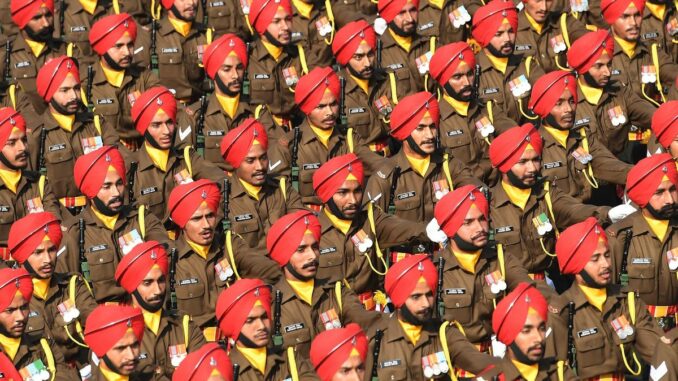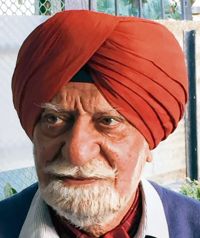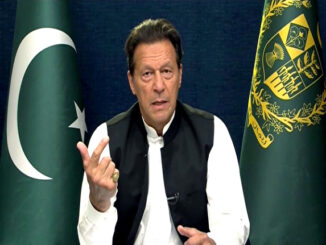

“It is only after enormous sacrifices and hardships that traditions are built and camaraderie comes about, which eventually plays on the psyche of the troops as they face extreme danger. The Indian military’s class units have reached their present standards after nearly two centuries of toil and sacrifices. They have lived by their calling, centered on Naam, Namak and Nishan and the unit’s battle cry.”
“With this ‘Tour of Duty’, we are out to destroy a well-established system and pattern of Indian military, which is otherwise acknowledged as one amongst the best in the world. We are doing all this when the Dragon is already at our door.”
Unfortunately, those working on these uncalled-for schemes have little idea of the military’s calling. None of them or their children ever served in the military. As against this, a good number of US presidents had served in the nation’s armed forces.
The pension bill of the defense services has been an issue of much concern to the Government of India. Gen Bipin Rawat, as the Chief of Defense Staff, too seemed worried about it. The defense services’ strength is about 1.5 million, while that of civilians in the Ministry of Defense is 3.75 lakh. However, their pension in proportionate terms is far more than that of the military personnel. The pension bill of state police and Central Police Organizations too is many times more than that of the soldiers.
Those in CPOs retire at the age of 58 years and draw much higher pension than those in the military, who retire at 35-37 years. The latter do not get half of their pay as pension because they do not serve for the minimum of 20 years. Consequently, when the soldier and policeman reach 60 years, the latter would have drawn approximately Rs 57 lakh more than the soldier. A soldier’s life ends at 61-62 years while a policeman’s average age is 70-71 years and the Railways employee’s is 73 years.
The soldiers’ lifespan is shorter due to early retirement, lesser pension and increasing financial worries.
To further disadvantage the soldier, the government plans to bring in Tour of Duty (ToD). Under this scheme, soldiers will serve for four years and then be demobilized. Out of these demobilized soldiers, some percentage (30-50%) would be re-enrolled for another 15 years. The earlier service of four years will not be counted towards pay and subsequent pension. Discrimination and injustice in this is too obvious to be missed. Those who are left out after four years of duty period will be trained in various technical skills. Some may be given an opportunity to work for a diploma or degree in engineering etc. Given the state of unemployment in the country, they will more likely remain jobless. Thousands of these unemployed ones, well trained in use of weapons, could create an altogether different internal security situation. How come this grand proposal of Tour of Duty is not being applied to the civil services, police and CPOs?
With the ever-increasing induction of high technologies into weapons and equipment of defense forces, how much operating skills would these inductees acquire during these four years and then deliver? As also, every four years, new batches would be trained in these high-tech weapons and equipment. This will have its own fallout on finances.
The other part of this plan for the defense service (which relates more to the military) is that the regimental system, where fighting arms units are based on a class basis (entire unit or companies/squadrons/ batteries within the units), will be done away with. In future, they will draw troops from all communities and religions all over India. In other words, the Indian Army would do away with single-class units and two- to three-class sub-units.
So far, the Army units have put up unparalleled performance in various wars, motivated by regimental traditions and religion-based battle cries. It is only after enormous sacrifices and hardships that traditions are built and camaraderie comes about, which eventually plays on the psyche of the troops as they face extreme danger. The Indian military’s class units have reached their present standards after nearly two centuries of toil and sacrifices. They have lived by their calling, centered on Naam, Namak and Nishan and the unit’s battle cry.
At present, the defense budget is approximately 1.5 per cent of the GDP, which is being rather low. Of this, the percentage required for revenue is quite high, leaving less money for capital expenditure (modernization etc). If the allocation is raised to 3 per cent of GDP, as recommended by various parliamentary committees, the revenue expenditure would drop to approximately 40 per cent of the defense budget.
A higher allocation for defense is not likely because of our politicians’ warped view of national security. Speaking in Parliament, one finance minister had observed, “Good defense is more than finance, a good defense is sound foreign policy, a good unneighborly policy.” Thus, financial allocations for defense, at low priority, and relations with neighbors remain indifferent.
China’s defense budget is five times that of India. India spends a greater percentage of the GDP on internal security plus VIP security than on revenue expenditure in the defense budget. The financial angle apart, the larger issue is the impact this new policy of recruitment will have on the overall performance of the military and in particular that of the Army.
Military is one component of the government that has always delivered, notwithstanding all of its drawbacks in weapons and equipment, unfair deals by successive pay commissions etc. Yet, this is the very element that we seemed determined to downgrade or perhaps destroy. Will these four-year tenure types have the essential motivation and willingness to lay down their lives when the call is made, while being aware that they are there for just four years? Will they imbibe that regimental spirit and unit’s battle cry which makes them carry on through a hail of bullets and exploding shells, with comrades falling left and right and moving up those impossible slopes to drive cold steel into the enemy?
Unfortunately, those working on these uncalled for schemes have little idea of the military’s calling. None of them or their children ever served in the military. As against this, a good number of US presidents had served in the nation’s armed forces.
Philip Mason, an ICS officer, in his book A Matter of Honor (1974), dilating on the long history of defeats of India’s armies, records, “No one gave thought to the best means of providing an army that would protect the state. Where did the disadvantage lie! I believe it lay in ideas about war, in the nature of organizations of armies and in the end in politics and the kind of governments that had grown up in India.” How different we are today!
With this ‘Tour of Duty’, we are out to destroy a well-established system and pattern of Indian military, which is otherwise acknowledged as one amongst the best in the world. We are doing all this when the Dragon is already at our door.
(The author is a retired Lt. General of Indian Army)





Be the first to comment